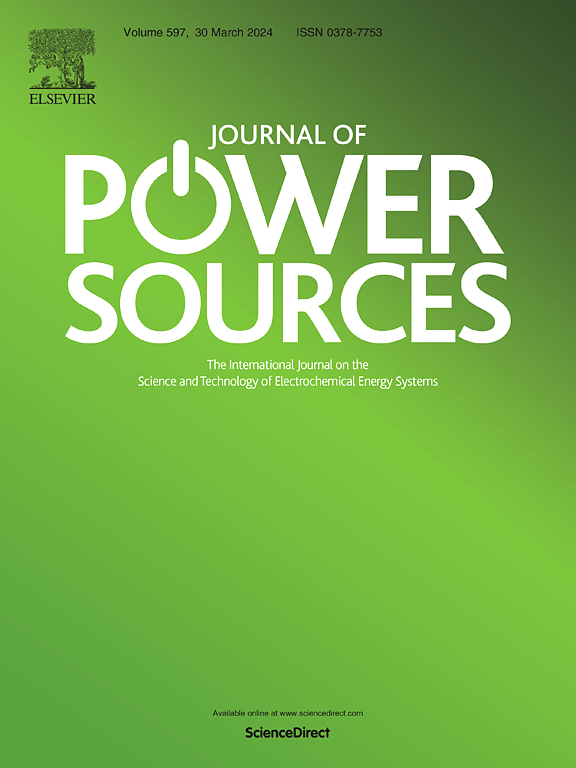A photo-bio-hybrid catalyst with a triple synergistic enhancement effect to boost oxygen reduction for high-performance biofuel cells
IF 8.1
2区 工程技术
Q1 CHEMISTRY, PHYSICAL
引用次数: 0
Abstract
Bilirubin oxidase (BOD)-catalyzed oxygen reduction reaction (ORR) exhibits outstanding advantages compared to abiotic electro-catalysts in neutral environment, thus playing a crucial role in fuel cells. However, limited by the low solubility of oxygen and the impeded extracellular electron transfer, the activity of BOD is fast-approaching its upper threshold. Given this, we create a mutually enhanced bio-abiotic hybrid ORR photo-electro-catalyst by integrating BOD with pyrrole nitrogen-doped carbon nanodots (BOD/Npyo-CDs). In BOD/Npyo-CDs, Npyo-CDs generate photoelectrons and vacancies under illumination, and the vacancies and BOD simultaneously accept electrons from the anode. The photoelectrons can rapidly transfer to BOD's active center due to the high electron conductivity of Npyo-CDs and well-matched energy level, further boosting the ORR on BOD. This process promotes photoelectrons-vacancies separation of Npyo-CDs and reduces fluorescence energy dissipation, which in turn promotes the ORR by generating more photoelectrons. Thanks to the triple synergistic promotion effect, the current density of BOD/Npyo-CDs reaches 2.76 mA cm−2. Coupled with an Au nanozyme anode, we develop a glucose/oxygen fuel cell with remarkable power output (468 μW cm−2) and high stable open-circuit voltage (0.78 V, 70 h). This study shed light on breaking the limitation in energy conversion efficiency by creating a mutually promoted bio-abiotic catalyst.
求助全文
约1分钟内获得全文
求助全文
来源期刊

Journal of Power Sources
工程技术-电化学
CiteScore
16.40
自引率
6.50%
发文量
1249
审稿时长
36 days
期刊介绍:
The Journal of Power Sources is a publication catering to researchers and technologists interested in various aspects of the science, technology, and applications of electrochemical power sources. It covers original research and reviews on primary and secondary batteries, fuel cells, supercapacitors, and photo-electrochemical cells.
Topics considered include the research, development and applications of nanomaterials and novel componentry for these devices. Examples of applications of these electrochemical power sources include:
• Portable electronics
• Electric and Hybrid Electric Vehicles
• Uninterruptible Power Supply (UPS) systems
• Storage of renewable energy
• Satellites and deep space probes
• Boats and ships, drones and aircrafts
• Wearable energy storage systems
 求助内容:
求助内容: 应助结果提醒方式:
应助结果提醒方式:


